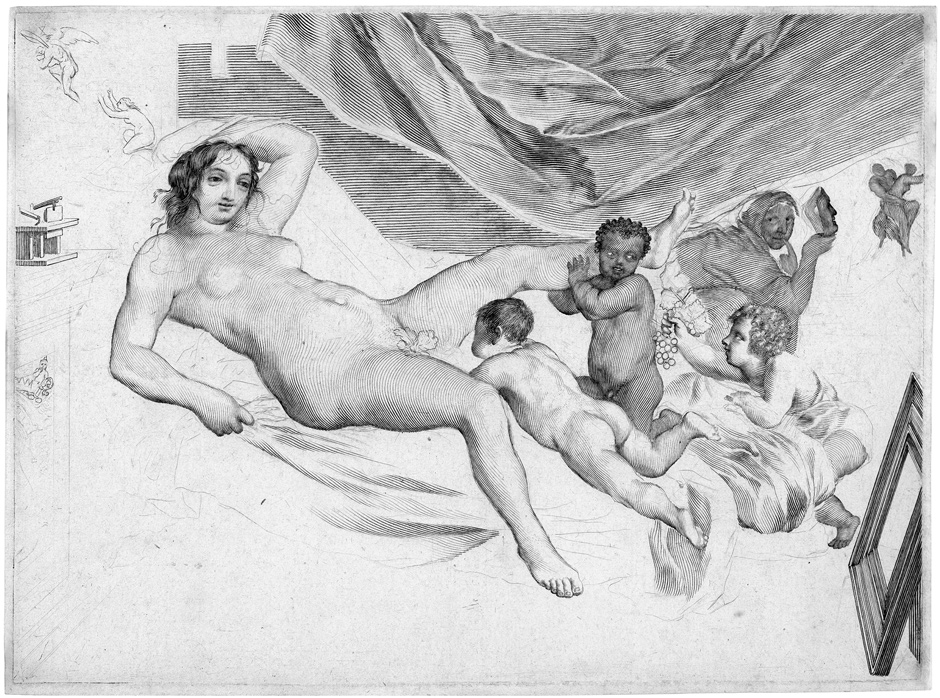Loading the page ...
Claude Mellan
(1601 Abbeville – 1688 Paris)
La Sourcière (The Mousetrap). Engraving and drypoint. 22.8 x 30.8 cm. Circa 1654. Montaiglon 373; BNIFF (Préaud) 275 II. Watermark: Bunch of grapes, Lily with letters.
Even to modern eyes the scene depicted here appears decidedly risqué, which is all the more astonishing given that the author of this whimsical image, the engraver Claude Mellan, is known primarily for his religious depictions and portraits. A young woman lying naked on a bed observes herself in a mirror. A little black boy opens her legs while another boy stares entranced ather vulva (which in the present state is concealed by a fig leaf); a third boy offers the pretty woman some grapes. In the left foreground a mousetrap stands on a faintly sketched pedestal.
The engraving dates to Claude Mellan’s mature period and, although never completed, undoubtedly ranks among his most remarkable creations. The artist used a dry point needle to delineate the main features of the composition and then worked with a burin to portray individual aspects in more detail. His iconography is as fascinating as it is enigmatic. In the background in the top left-hand corner a woman laments the abduction of her child by Saturn or the personification of time. On the right-hand side a woman is being overpowered by a satyr, while an old woman holding a mask, who probably symbolises deceit, turns her eyes to the beholder. The individual elements of the composition are all of significance with respect to the pretty naked woman, but the deeper meaning of this allegory has yet to be unequivocally clarified. Maxime Préaud has offered the following intriguing interpretation. The black boy averts his gaze from the woman and looks into the mirror. It can be assumed that the boy is Mellan himself, whose name – melan in Greek –means black. As an engraver he is forced to look at the world in a mirror image, as it were. Another explanation is also feasible. It is said that Mellan did not get married until 1654 when he was already in his fifties. In 17th century vernacular a mousetrap was a synonym for the female pudenda and so perhaps the scene should be interpreted as an allusion to the fact that the artist was rather late in succumbing to the charms of the female sex (see exhibition catalogue French Prints from the Age of the Musketeers, published by S. Welsh Reed, Museum of Fine Arts,Boston 1998, no. 111, pp. 208–209).
A very fine impression, printing with considerable contrast and burr, with thread margins. The print is extremely rare. Only one impression of the first state – prior to the addition of the figleaf – is known to exist. It is kept in the Bibliothèque nationale de France in Paris. The edition must have been very limited, because even from the second state there are no more than a handful of impressions. Minimal signs of ageing, otherwise in impeccable condition.
